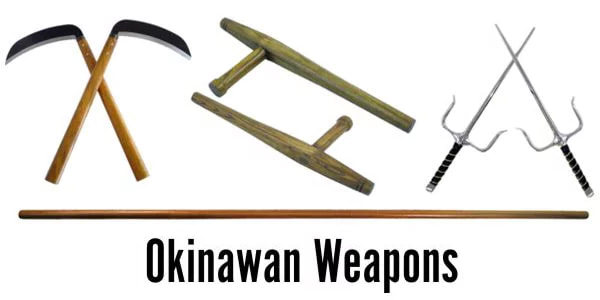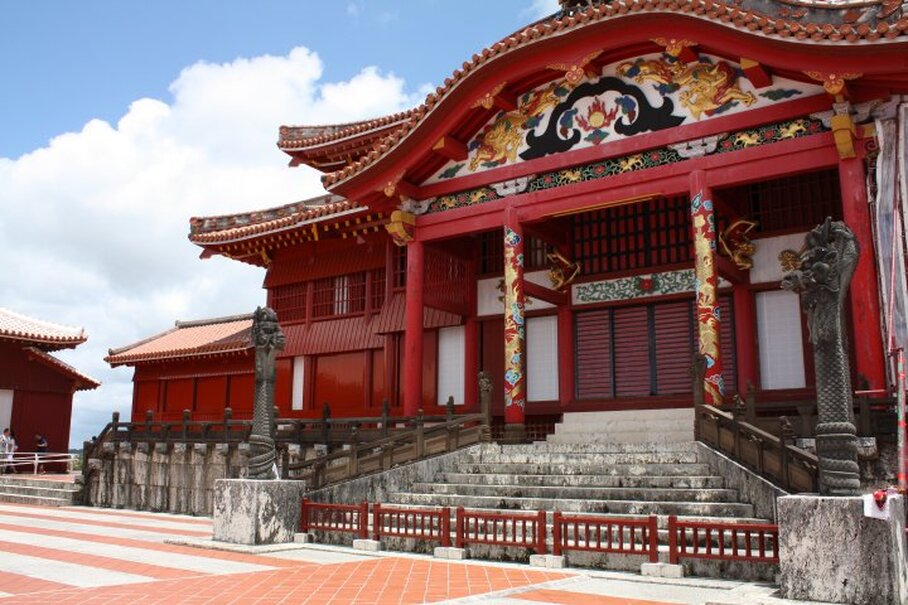The traditional Okinawan art of weapons, kobudo was developed as a means of defense in response to the ruling class banning the possession of weapons. In order to protect themselves and their families, the people developed ways of fighting that used objects found in their everyday life such as the six foot stick used for carrying baskets (bo or kon), possible farming tools (sai), small gardening sickles (kama), grist mill handles (tunfa), wood and rope horse bridles (nunchaku), saddle stirrups (tekko), and boat oars (eku). With their constant use of these objects in their daily lives, it's easy to see how these men could become proficient with these tools and their uses as weapons.
Kobudo training follows much the same path as that of empty hand work, beginning with basics, progressing to specific patterns known as kata, and then incorporate one step sparring drills done with a partner.
Kobudo training follows much the same path as that of empty hand work, beginning with basics, progressing to specific patterns known as kata, and then incorporate one step sparring drills done with a partner.
Bo The bo is a six-foot long staff, tapered at either end, traditionally made of red or white oak, and was perhaps developed from a farming tool called a tenbin: a stick placed across the shoulders with baskets or sacks hanging from either end.
The basis of bo technique is te, or hand, techniques with thrusting, swinging, and striking techniques often resemble empty-hand movements, and sometimes used in the same manner a spear or long sword in some of its motions, such as upward swing and slashing motion across the body as well as extensions by gripping one end and thus increasing its length. |
Sai The sai is a three-pronged truncheon sometimes mistakenly believed to be a variation on a small, hand-held rake. This is highly unlikely as metal on Okinawa was in short supply at this time and a stick would have served this purpose more satisfactorily. The sai appears similar to a short sword but is not bladed and the end is traditionally blunt. The weapon is metal and of the truncheon class with its length dependent upon the forearm of the user. The two shorter prongs on either side of the main shaft are used for trapping other weapons such as a sword or bo.
Typically used in pairs, with one in each hand, the utility of the sai as a weapon is reflected in its distinctive shape and evident from the various kata. It is a weapon used for fast jabs but it also has many defensive techniques. The style includes a variety of strikes, blocks, parries and captures against attackers from all directions and height levels. Use of the point, knuckle and central bar is emphasized, as well as rapid grip changes for multiple strikes and blocks. |
Kama The kama is a traditional farming sickle found in many shapes and forms throughout Southeast Asia, and widely used to cut various crops. Considered one of the hardest weapons to learn due to the inherent danger in practicing with such a weapon, the kama is a short handle with a curved, razor sharp blade attached to one end at a right angle.
Used singly or in pairs the kama takes advantage of both the point and sharpened edge of the metal blade, with Okinawan kata suggesting that it could also be used to block, trap and disarm an opponent's weapon. |





